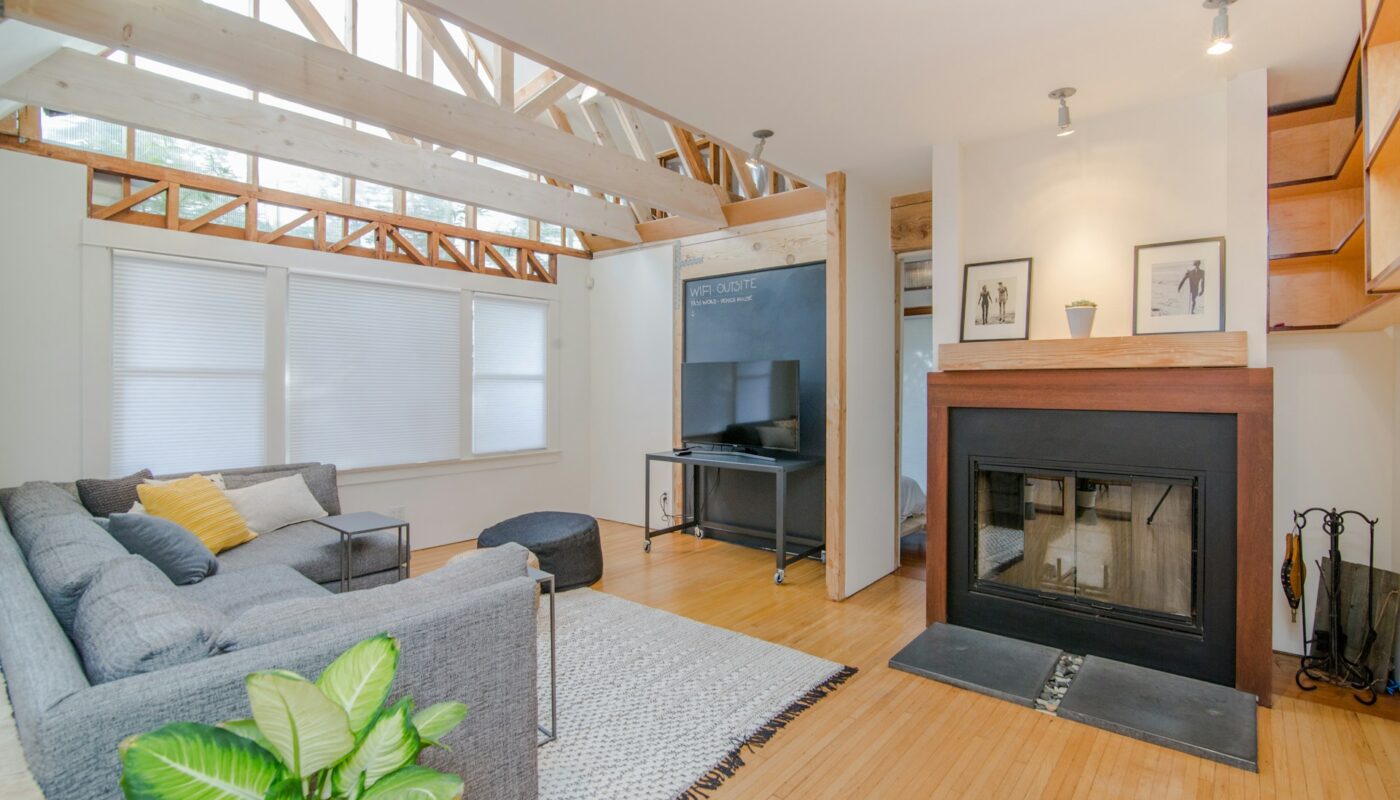In regions like Long Island City, where air quality currently meets the World Health Organization’s annual guideline value for PM2.5 concentrations, residents might easily overlook the importance of maintaining indoor air quality. However, the indoor environment can significantly differ from outdoor conditions, often containing unique pollutants and irritants that can impact health and well-being. Considering that individuals spend a substantial amount of their time indoors, prioritizing the quality of the air within homes is crucial. Ensuring a healthy indoor environment not only supports overall health but also enhances living comfort, making it a critical consideration for all homeowners.
Now, let’s go over a few things that can impact your home’s indoor environment:
Heating, Ventilation, and Air Conditioning Systems
One of the key contributors to a home’s indoor environment is its heating, ventilation, and air conditioning (HVAC) system. An HVAC system that is outdated or poorly maintained can circulate dust, allergens, and other pollutants throughout a home, diminishing air quality and potentially exacerbating health issues such as allergies and asthma. Furthermore, inefficiencies in the system can lead to uneven heating and cooling, creating uncomfortable living conditions and unnecessarily high energy bills. Regular maintenance, for instance, cleaning and replacing filters, is essential to keep the system running smoothly and the air in your home clean.
For those needing upgrades or maintenance, seeking out HVAC services in Long Island can provide a solution tailored to improving indoor air quality and energy efficiency. Looking up the keyword Long Island HVAC services company near me on any search engine will prove helpful in this regard. Professionals in the field can offer insights into the latest advancements in HVAC technology, which can significantly enhance a home’s environmental comfort and reduce energy consumption.
Services might include installing more efficient units, sealing ductwork to prevent leaks, or integrating air purification systems directly into the HVAC system. By partnering with experts, homeowners can ensure their HVAC system contributes positively to their indoor environment, keeping it comfortable and healthy year-round.
Indoor Humidity Levels
Maintaining optimal indoor humidity levels is crucial for both comfort and health. Excessively high humidity can promote the growth of mold and mildew, which can damage home structures and contribute to health problems, including respiratory issues and allergies. On the other hand, air that is too dry can irritate the skin, eyes, and throat and exacerbate symptoms of asthma and other respiratory conditions. Ideally, indoor humidity should be kept between 30% and 50% to balance comfort and health.
Homeowners can manage humidity levels by using dehumidifiers in damp areas, such as basements, to remove excess moisture from the air and humidifiers in dry environments to add necessary moisture. Additionally, ensuring that bathrooms, kitchens, and laundry rooms are well-ventilated can help control humidity levels and prevent the accumulation of moisture. Simple habits, for example, using exhaust fans when cooking or showering, can also make a significant difference in maintaining the right humidity levels, contributing to a healthier and more comfortable home.
Indoor Air Pollutants
Indoor air quality can be compromised by a variety of pollutants, including volatile organic compounds (VOCs) emitted from paints, furniture, and cleaning products, as well as allergens like pet dander, dust mites, and pollen. These pollutants can have immediate effects, such as eye and throat irritation, as well as longer-term health impacts, particularly for individuals with respiratory conditions or sensitivities. Minimizing exposure to these pollutants is key to maintaining a healthy indoor environment.
Regular cleaning can significantly reduce the accumulation of dust and allergens while choosing low-VOC products for home improvement and cleaning can minimize the presence of harmful chemicals. Proper ventilation is also crucial; opening windows to allow fresh air to circulate can help dilute and remove indoor pollutants. For more targeted air purification, homeowners might consider investing in air purifiers equipped with HEPA filters, which can trap fine particles and allergens, further improving indoor air quality and creating a safer, more comfortable living space.
Radon Gas
Radon gas, a naturally occurring radioactive substance, can seep into homes through cracks in the foundation or gaps around pipes, posing a significant health risk without any visible signs. It’s the leading cause of lung cancer among non-smokers, making it a silent yet deadly hazard in residential environments. The levels of radon can vary greatly between homes, and because it’s odorless and colorless, testing is the only way to determine if your home has a radon problem.
To address this issue, homeowners should test their homes for radon using available test kits or by hiring professionals. If high levels are detected, it’s crucial to undertake mitigation efforts, which typically involve installing systems that vent radon gas from beneath the home to the outside, preventing it from entering indoor spaces. Regular testing and proper mitigation can drastically reduce the health risks associated with radon, ensuring a safer indoor environment for you and your family.
Household Chemicals and Pesticides
Many common household products, for instance, cleaning agents and pest control solutions, contain chemicals that can be harmful to both health and the environment. Continuous exposure to these substances can lead to a variety of health issues, including respiratory problems, skin irritation, and more serious conditions over time. The indoor use of these products can significantly degrade air quality and contribute to a toxic home environment.
Opting for natural or non-toxic alternatives for cleaning and pest control can make a significant difference in reducing your home’s chemical burden. Additionally, proper storage of chemicals and careful disposal of unused products can prevent accidental exposure. By being mindful of the products you bring into your home and choosing safer alternatives, you can significantly improve your indoor environment and reduce health risks for your household.
Poor Ventilation
Adequate ventilation is essential for maintaining healthy indoor air quality. Without it, pollutants can accumulate to levels that pose health and comfort issues for occupants. Modern homes, in particular, are built to be energy-efficient, which often means they are tightly sealed and can have limited natural airflow, leading to stagnant air and pollutant build-up.
Improving your home’s ventilation can involve several strategies, such as ensuring that vents in kitchens and bathrooms are clean and functional, using window or attic fans to increase air exchange, and incorporating plants that can naturally purify air. For homes in areas with high outdoor pollution, mechanical ventilation systems with filters can introduce fresh, clean air from outside while minimizing the entry of pollutants. Enhancing ventilation not only clears indoor pollutants but also helps manage humidity levels, contributing to a healthier and more comfortable living environment.
Final Thoughts About Your Home’s Indoor Environment
Maintaining a healthy indoor environment is crucial for the well-being of all occupants. The factors highlighted—HVAC system efficiency, indoor humidity levels, air pollutants, radon gas presence, chemical usage, and ventilation quality—play significant roles in shaping the quality of your home’s indoor air. By taking proactive steps to address these areas, such as regular maintenance, testing for radon, choosing safer household products, and improving ventilation, homeowners can significantly enhance their living space’s safety, comfort, and healthiness.



